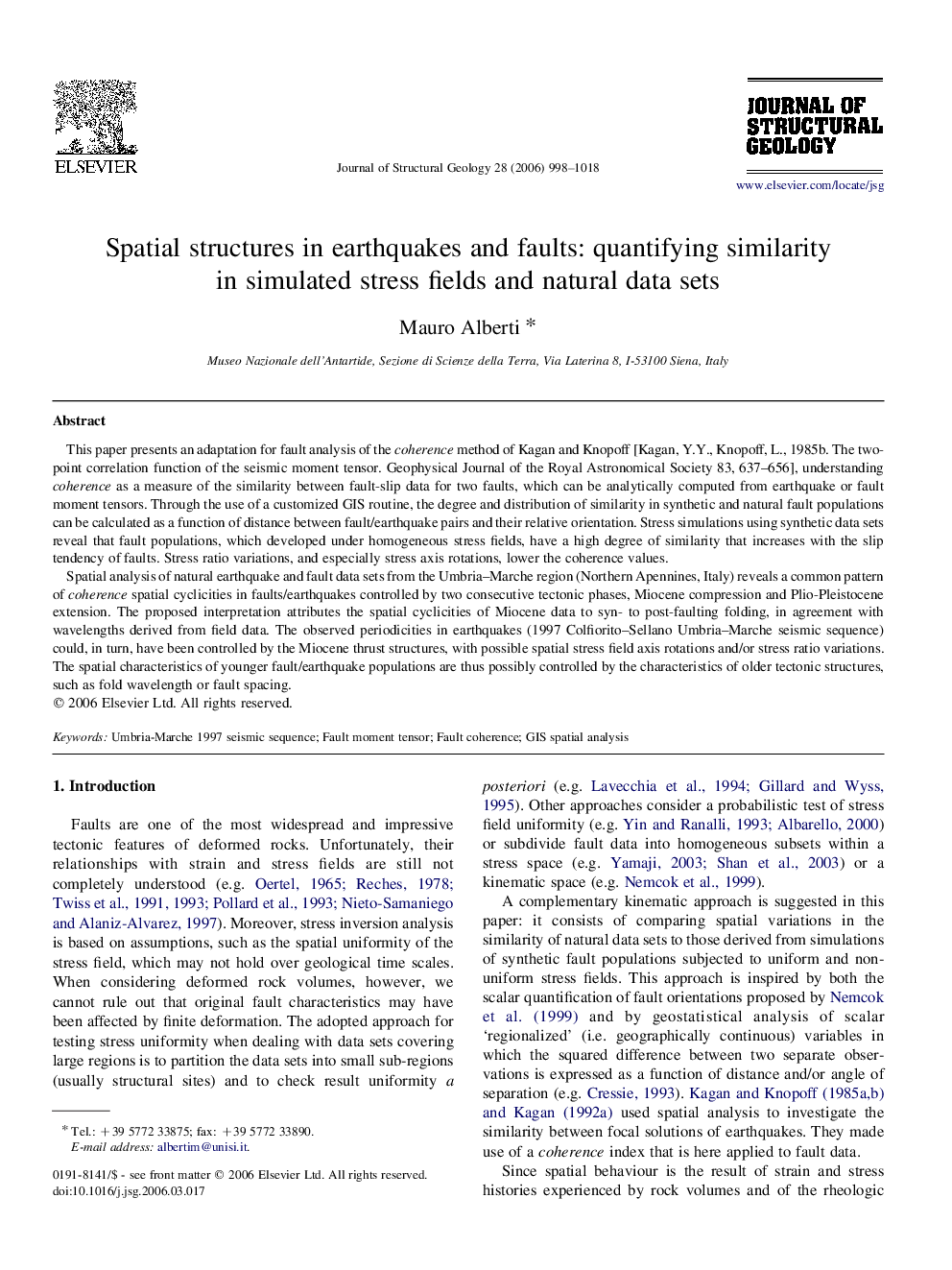| کد مقاله | کد نشریه | سال انتشار | مقاله انگلیسی | نسخه تمام متن |
|---|---|---|---|---|
| 4734510 | 1357132 | 2006 | 21 صفحه PDF | دانلود رایگان |

This paper presents an adaptation for fault analysis of the coherence method of Kagan and Knopoff [Kagan, Y.Y., Knopoff, L., 1985b. The two-point correlation function of the seismic moment tensor. Geophysical Journal of the Royal Astronomical Society 83, 637–656], understanding coherence as a measure of the similarity between fault-slip data for two faults, which can be analytically computed from earthquake or fault moment tensors. Through the use of a customized GIS routine, the degree and distribution of similarity in synthetic and natural fault populations can be calculated as a function of distance between fault/earthquake pairs and their relative orientation. Stress simulations using synthetic data sets reveal that fault populations, which developed under homogeneous stress fields, have a high degree of similarity that increases with the slip tendency of faults. Stress ratio variations, and especially stress axis rotations, lower the coherence values.Spatial analysis of natural earthquake and fault data sets from the Umbria–Marche region (Northern Apennines, Italy) reveals a common pattern of coherence spatial cyclicities in faults/earthquakes controlled by two consecutive tectonic phases, Miocene compression and Plio-Pleistocene extension. The proposed interpretation attributes the spatial cyclicities of Miocene data to syn- to post-faulting folding, in agreement with wavelengths derived from field data. The observed periodicities in earthquakes (1997 Colfiorito–Sellano Umbria–Marche seismic sequence) could, in turn, have been controlled by the Miocene thrust structures, with possible spatial stress field axis rotations and/or stress ratio variations. The spatial characteristics of younger fault/earthquake populations are thus possibly controlled by the characteristics of older tectonic structures, such as fold wavelength or fault spacing.
Journal: Journal of Structural Geology - Volume 28, Issue 6, June 2006, Pages 998–1018